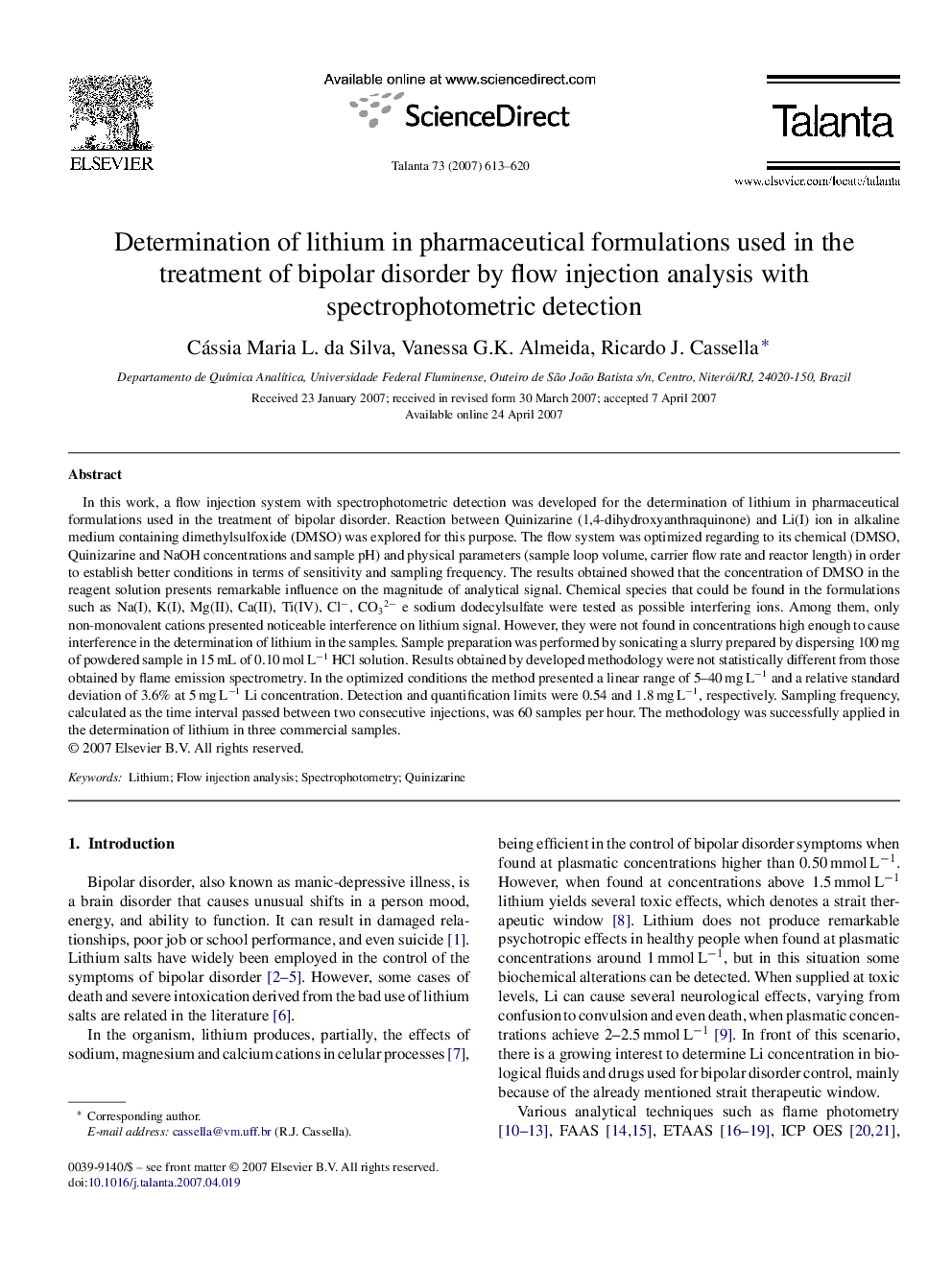| Article ID | Journal | Published Year | Pages | File Type |
|---|---|---|---|---|
| 1247169 | Talanta | 2007 | 8 Pages |
In this work, a flow injection system with spectrophotometric detection was developed for the determination of lithium in pharmaceutical formulations used in the treatment of bipolar disorder. Reaction between Quinizarine (1,4-dihydroxyanthraquinone) and Li(I) ion in alkaline medium containing dimethylsulfoxide (DMSO) was explored for this purpose. The flow system was optimized regarding to its chemical (DMSO, Quinizarine and NaOH concentrations and sample pH) and physical parameters (sample loop volume, carrier flow rate and reactor length) in order to establish better conditions in terms of sensitivity and sampling frequency. The results obtained showed that the concentration of DMSO in the reagent solution presents remarkable influence on the magnitude of analytical signal. Chemical species that could be found in the formulations such as Na(I), K(I), Mg(II), Ca(II), Ti(IV), Cl−, CO32− e sodium dodecylsulfate were tested as possible interfering ions. Among them, only non-monovalent cations presented noticeable interference on lithium signal. However, they were not found in concentrations high enough to cause interference in the determination of lithium in the samples. Sample preparation was performed by sonicating a slurry prepared by dispersing 100 mg of powdered sample in 15 mL of 0.10 mol L−1 HCl solution. Results obtained by developed methodology were not statistically different from those obtained by flame emission spectrometry. In the optimized conditions the method presented a linear range of 5–40 mg L−1 and a relative standard deviation of 3.6% at 5 mg L−1 Li concentration. Detection and quantification limits were 0.54 and 1.8 mg L−1, respectively. Sampling frequency, calculated as the time interval passed between two consecutive injections, was 60 samples per hour. The methodology was successfully applied in the determination of lithium in three commercial samples.
